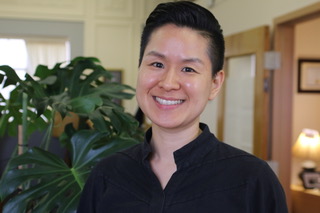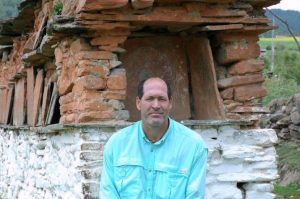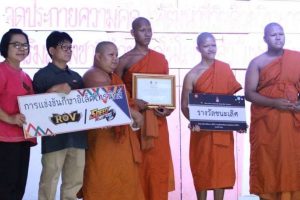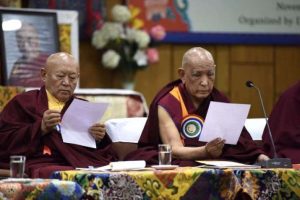
The founder of Won Buddhism, Sotaesan (1893–1941), was concerned with a persistent philosophical problem: what is the nature of the mind? More importantly, what is the method of applying the mind amid thousands of perceptual objects? Rather than digress into ontological theories of the mind, Sotaesan chose to create a religious teaching that addresses the nature of the mind through practiced application in daily life.
Historical evidence suggests that the privileging of applying the mind may well be traced to certain 20th century Korean Buddhist reform movements, notably those that urged bringing the teachings out of the mountains and back into society, and that these reforms emerged in response to Japanese colonial occupation and the external advancement of material civilization. Several features of transformation in Buddhist thought and practice become evident during this period, such as a tendency to rationalize religious practice and doctrine and a growing concern for material development.
Sotaesan spent his lifetime formulating a teaching that would train people to use their minds amid modernity’s inevitable development of material civilization. The larger purpose of his teaching was to epitomize the bodhisattva ideal of caring for oneself while simultaneously feeling concern and acting for the benefit of others, specifically within this context of modernization. Sotaesan’s interpretation of mind reflects what he deemed most appropriate for a society inevitably affected by scientific civilization. In his interpretation, the role of the meditative experience is not central to the tradition, but rather the practical application of the mind is the core of its doctrine. As such, virtue is not confined to the nature of the mind but is determined by how one pilots their mind in all situations.
From an early age, Sotaesan immersed himself in questions about natural phenomena and human relations, which later transitioned into existential questions about life and cosmology. Without a spiritual teacher to guide him, Sotaesan decided to seek answers to his questions by trying different practices, such as praying to mountain gods and earnestly searching for a teacher. Although each attempt failed, his determination never waned, and he continued to seek a teacher while ruminating on those questions.
On 28 April 1916, Sotaesan stood on a riverbank entranced by the question, “What do I do with this one thought?” He fell into a deep state of samadhi, at which point he attained Great Enlightenment. After that moment, the answers to all his questions suddenly became clear. He no longer felt any restrictions in the mind, but experienced vast and boundless space. Shortly thereafter, he began to study the primary scriptures of religions such as Buddhism, Cheondogyo, Christianity, Confucianism, and Daoism. His exposure to a diverse collection of scriptures and commentaries led him to develop a natural eclectic set of Won Buddhist teachings.
Among many scriptures, Sotaesan’s encounter with The Diamond Sutra was unique because the text first appeared to him in a dream. After hearing that a copy was housed at Bulgapsa Buddhist temple, Sotaesan managed to get a close friend to retrieve it for his perusal. After reading the sutra, he decided to take the Buddhadharma as the central doctrine of the religious order he was about to establish, and he adopted Shakyamuni Buddha as his original guide, declaring that he was the “Sage of Sages.”
Sotaesan realized that many aspects of his own experience coincided with the practice and sayings of the Buddha. For this reason, Sotaesan later included a separate section in the Won Buddhist scriptures called The Essential Sutras of the Buddhas and Patriarchs, in which he placed The Diamond Sutra first among eight sutras. In The Principal Book of Won-Buddhism, The Diamond Sutra is alluded to in the chapter “The Dharma of Timeless Seon:” “Give rise to a mind that, even while responding, does not abide anywhere.” Sotaesan took this line and later created his version: “In all your applications, be heedful to make choices with sound thought.”
In terms of commanding the path of practice, Sotaesan would turn to the teachings of the Seon masters, in particular Chinul (1158–1210). Chinul’s Secrets on Cultivating the Mind explained the necessity for gradual cultivation to remove habituated defilements through the practices of concentration and wisdom (samadhi and prajna). Similar to Chinul, Sotaesan taught that the key to alleviating suffering was to shine the light inward and awaken to one’s nature. However, instead of emphasizing the teaching of “no-self” (無我), Sotaesan emphasized practicing for the sake of cultivating “selflessness” (無私) or affirming a “public mind” (公心).
What distinguishes Sotaesan is that the application of said ethics must occur in a non-bounded venue, beyond the temple grounds and mountain redoubts. Sotaesan linked an ethical foundation to the social world and not merely to the individual practitioner’s actions, because he believed that the benefit and harm one received were caused by how one interacted with one’s external surroundings. Nevertheless, both Chinul and Sotaesan referred to core teachings in Buddhism, such as the Threefold Practice (三學), to further support their doctrines. Unlike Chinul, who implicitly incorporated sila into his threefold training scheme, Sotaesan argued that without fully addressing sila, there was no purpose in cultivating samadhi and prajna. Given his assertion that the internal investigation of the mind is inevitably intertwined with the external world, Sotaesan expanded the three practices of sila, samadhi, and prajna to encompass Cultivating the Spirit, Inquiry into Human Affairs and Universal Principles, and Choice in Action—three forms of practice that he carefully laid out so that they could be applied by anyone, regardless of class or level of education. It was through these doctrinal distinctions that Sotaesan made sila, samadhi, and prajna more meaningful and attainable in the context of secular life.
Much of Sotaesan’s rationale for advancing a teaching that connected mind and matter and the individual with society arose in response to the circumstances in which he lived, and from the need to prepare for the future. The social upheaval, civil unrest, political turmoil, and suppression of cultural and religious freedoms of his time forced Sotaesan to reflect on the relation between the oppressed and the oppressor and on the balance between the sacred and the profane. His encounter with Japanese officials, compounded with strict legal restrictions on his burgeoning community, prompted Sotaesan to investigate and implement nonviolent ways to deal with the dire situation. For the community to survive the Japanese occupation period, its members needed to be equipped with spiritual tools so that they could respond to the situation with sound thought. In many instances, this meant starting an inner revolution that increased the individual’s capacity to look beyond the self and see the interdependence of humanity.
Related features from BDG
My Journey on the Path of Won Buddhism
The Language of Kindness













